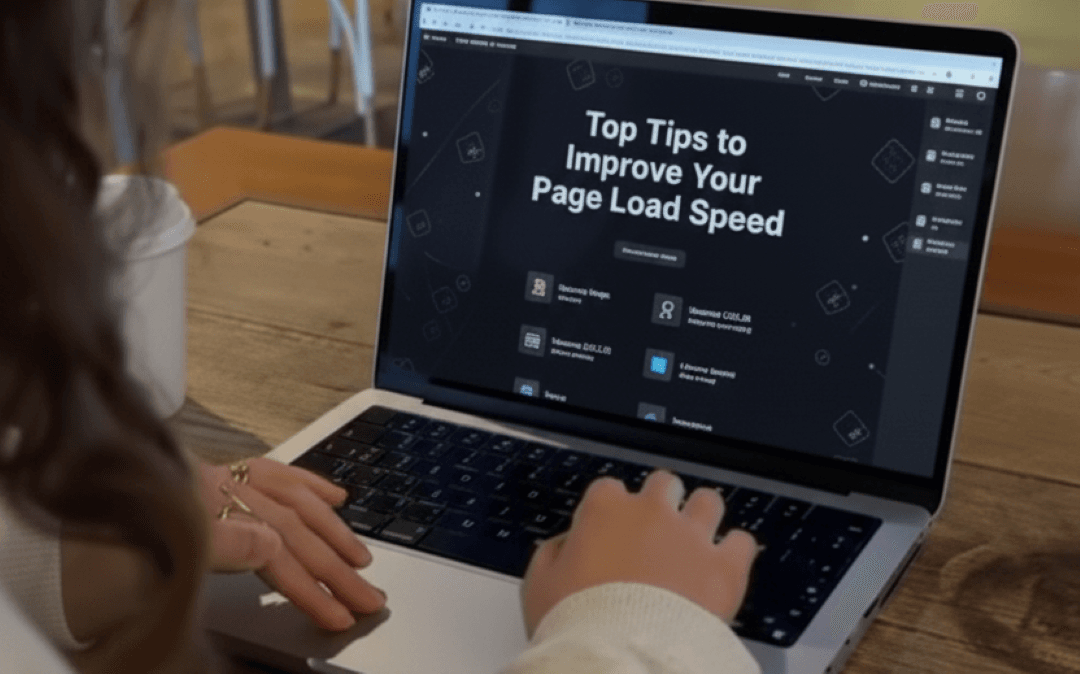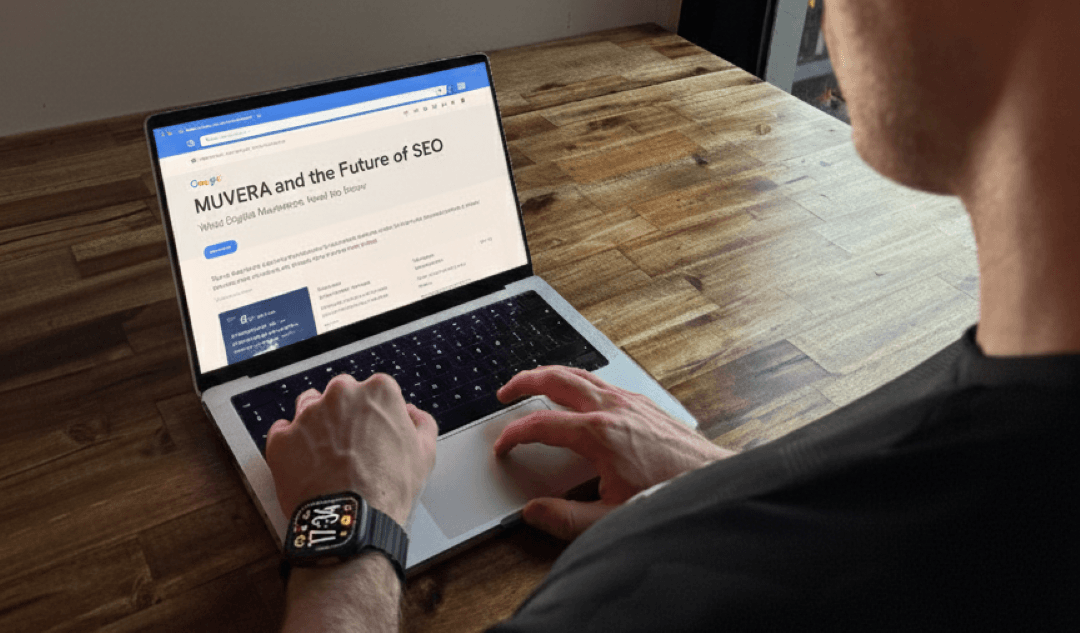Top Tips to Improve Your Page Load Speed
Improving page load speed can seem tricky at first. With so many factors to consider, from images and code to hosting and scripts, it’s easy to feel overwhelmed. But even minor improvements make a big difference, and the impact goes far beyond technical performance. Faster pages mean better user satisfaction, improved search rankings, and more conversions.
So, if you’re wondering how to speed up website loading time or want practical website performance tips to improve page load speed, this guide will help.
H2: Ready to see how your site measures up?
The Social Bay offers a free website speed review tailored to your setup. We don’t do generic reports. Instead, we pinpoint what’s slowing you down and explain how to improve your page load speed for better core web vitals optimisation and overall user experience.
Interested? Let’s talk. Contact us now!
Why Page Load Speed Is Important
Let’s be honest. When a page takes too long, most people leave before seeing your content. That impatience is real. Studies show that even a one-second delay in loading can reduce conversions by up to 7%. It’s not just about keeping visitors; it’s about creating a positive impression. If your site feels slow or clunky, people might question your professionalism or trustworthiness.
Then there’s the SEO side of things. Google’s algorithm factors in speed, particularly through metrics like core web vitals optimisation, which includes measures like Largest Contentful Paint (how quickly the main content loads), First Input Delay (how quickly the page responds), and Cumulative Layout Shift (visual stability). These directly influence your page speed in SEO and ranking.
Faster loading also encourages visitors to explore more pages, improving engagement and increasing the chances of turning visits into leads or sales. So, focusing on website speed optimisation is a win on multiple fronts.
How Web Design Impacts Page Load Speed
It’s worth mentioning the role of the web and website design in your site’s speed. Every design decision affects loading times, from the size and number of images to the complexity of code and interactive elements. Heavy, unoptimised graphics or excessive scripts can slow down your site significantly.
Good web design doesn’t just look nice; it’s planned to ensure faster load times by using optimised images, efficient code, and wise layout choices. A responsive design that adapts smoothly to mobile devices also helps speed, as it reduces unnecessary content on smaller screens.
Choosing a design partner who understands website speed optimisation is vital if you’re looking for affordable web design services in Manchester that prioritise speed and user experience. This way, you don’t just get a pretty site but one that performs, keeps visitors engaged and ranks better.
How to Measure Your Website Speed
Before diving into fixes, measure your current speed. Tools like:
- Google PageSpeed Insights provides detailed scores and highlights what needs improving.
- GTmetrix offers in-depth breakdowns
- Pingdom helps track performance from various global locations.
Remember, testing on multiple devices and networks gives the most realistic view. A site might load quickly on your fast connection but struggle elsewhere. These tools also guide you through speeding up website loading time based on detected issues.
While flawless scores are ideal, aim for meaningful improvements that impact the real user experience rather than chasing perfection.
Practical Tips to Improve Page Load Speed
Let’s explore some practical ways to speed up your site. These tend to deliver noticeable results without requiring a complete overhaul.
Optimise Images and Media
Images are usually the biggest culprits for slow loading. Large, uncompressed files drag down page speed unnecessarily. Always resize images to the desired display size and compress them using tools like TinyPNG or Imagify. Modern formats like WebP reduce file size even more, speeding things up further without losing quality.
Video embeds can also slow things down, especially if self-hosted. Using platforms like YouTube for video content can ease the load on your server and improve overall website performance.
Minify and Optimise Code
The code loaded by your site, HTML, CSS, and JavaScript, can get bulky over time. Removing spaces, comments, and unused code (minifying) reduces file sizes, helping browsers load your site faster. Tools like UglifyJS and CSSNano automate this process for you.
Also, cleaning up unused or heavy scripts provides a nice speed boost. Every line of unnecessary JavaScript can add precious milliseconds to your load time.
Use Caching and a Content Delivery Network (CDN)
Caching saves parts of your site locally on visitors’ devices or pre-builds pages on your server, so they don’t have to be rebuilt every time. This significantly accelerates page load.
A CDN distributes your site files across servers worldwide, delivering them from locations closer to users. This speeds up loading and improves reliability, especially for sites with international visitors.
Optimise Hosting and Servers
No matter how much you tweak your site, a slow or overcrowded server can bottleneck your efforts. Shared servers often mean your site competes for resources, causing slowdowns. Upgrading to dedicated or managed hosting improves speed noticeably.
Check if your host supports modern protocols like HTTP/2 or HTTP/3. These protocols improve data transfer, helping with website speed optimisation.
Reduce Redirects and Heavy Scripts
Each redirect means an extra request and a delay. Simplify your URLs and reduce redirects wherever possible.
Heavy third-party scripts, like chatbots or tracking tools, add load time. Prioritise essentials, and disable or replace anything that drags your site down without adding enough value.
Advanced Strategies for Speed Optimisation
For more complex sites, techniques like lazy loading, loading images or videos only when needed, improve initial load speed noticeably.
Database optimisation cleans out unnecessary data, making queries faster, which is especially important for CMS platforms like WordPress.
Preloading and prefetching hint browsers about resources to load next, shaving milliseconds from total load time.
For high-traffic sites, load balancing across multiple servers ensures reliable speed under heavy use.
Just be cautious: over-optimising can lead to complicated setups that are hard to maintain. Focus on changes that bring the most benefit for your effort.
Final Thoughts
Increasing your website’s speed is not just a technical chore; it’s a powerful tool for improving user experience and business results. Even simple changes like optimising images or cleaning up code add up.
Speed affects trust, engagement, SEO, and your bottom line. Measure regularly and stay on top of evolving website performance tips. This isn’t a one-time fix but a continuous process.
Remember, the goal of website speed optimisation isn’t perfection; it’s the smoothest, quickest, most pleasant experience you can create for your visitors. That’s what keeps them returning, and why it’s worth paying attention to every second your page takes to load.
Want to Take the Next Step?
Improving page load speed may not seem urgent until you see the difference it makes. At The Social Bay, we offer a free, personalised site speed review that identifies exactly where your performance lags and what you can do about it, without jargon or generic advice.
From there, we can help implement improvements designed to optimise your core web vitals and boost your page speed in SEO. Faster sites don’t just rank better, they keep visitors happy and grow your client base. Ready to get started?
Contact us at:
Email: hello@thesocialbay.co.uk
Phone: 07441 918230
Frequently Asked Questions
What is a good page load time?
- According to Google’s Core Web Vitals, a “good” page load time is typically under 2.5 seconds, though some sources recommend aiming even lower for optimal user experience. The faster, the better. There’s no fixed threshold; just try to keep things snappy for visitors.
What does it mean to “minify” my code?
- Minifying removes unnecessary whitespace, comments, and line breaks from your HTML, CSS, and JavaScript files. The files become smaller, so they download faster, but the code works the same.
What is a CDN, and should I use one?
- A Content Delivery Network (CDN) is a group of servers distributed worldwide that deliver your site’s content from the nearest location to your visitor. A CDN can offer considerable speed improvements if your site has a global audience or experiences high traffic.
How does caching work?
- Caching keeps copies of your website’s static files—say, images and code—on a visitor’s browser so next time they come back, those assets load instantly from their device rather than being downloaded again.
Do I need a 100/100 score on Google PageSpeed Insights?
- No, there’s no need for a perfect score. Focus on resolving the tool’s key suggestions and keeping Core Web Vitals in a healthy range; improvements here tend to matter more than chasing an elusive 100.
Why is my mobile score much lower than my desktop score?
- Mobile scores are lower because mobile devices sometimes have slower processors, and Google simulates slower connections during tests. Optimising images, keeping code lightweight, and making your site responsive can bridge that gap.




